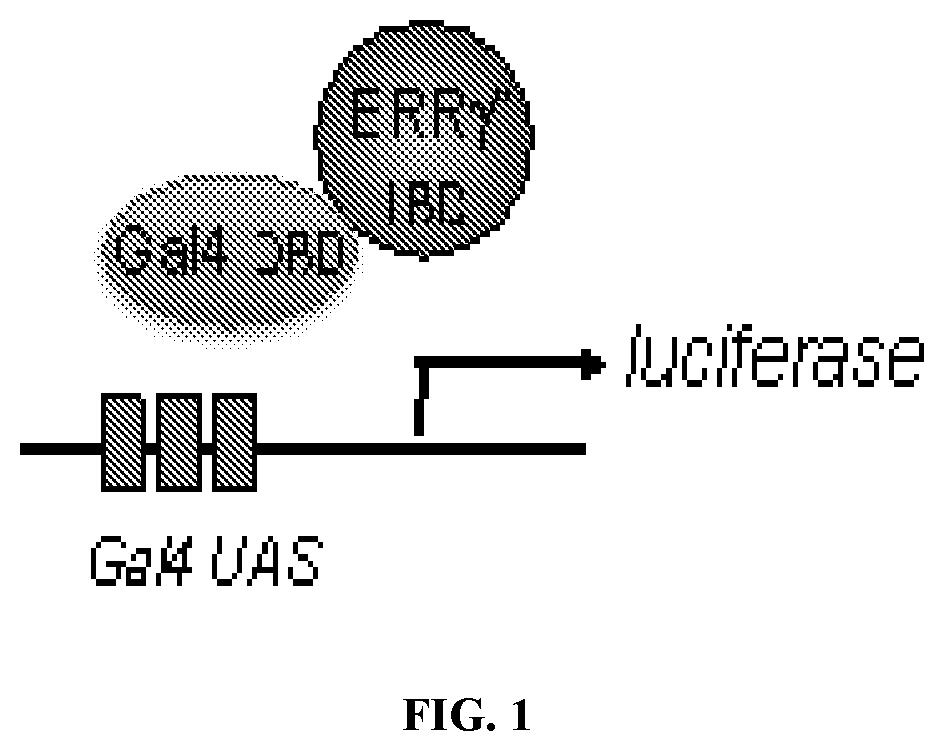Err inverse agonists
a technology of inverse agonists and agonists, applied in the field of inverse agonists, can solve the problems of reducing exercise capacity and mitochondrial function, no effective treatment that directly targets aberrant muscle function, and affecting mitochondrial function
- Summary
- Abstract
- Description
- Claims
- Application Information
AI Technical Summary
Benefits of technology
Problems solved by technology
Method used
Image
Examples
example 1
[0250]The inventors have developed a series of potent ERR ligands utilizing a structure-based drug design approach. Starting from a reported co-crystal structure of the ERRγ ligand binding domain with the agonist, GSK4716, they developed a docking model and designed a series of di-substituted heteroaromatic compounds. Once these compounds were prepared they were screened in a ERRγ thermal shift assay to determine if they bound directly to the receptor and altered its thermal stability. Compounds that dose-dependently affected the melting point of ERRγ to a greater or comparable degree than the standards were evaluated in a cell based assay of ERRγ activity. Using a Ga14-ERRγ ligand binding domain chimera cotransfection cell-based assay the activity of several of the hits identified in the thermal shift assay were confirmed to dose-dependently activate the transcriptional activity of ERRγ (FIG. 1).
example 2
A. General Synthetic Procedure
[0251]Compounds of the present invention can be prepared following the general procedure outlined below. Starting from the appropriate bromo substituted heterocycle such as I with either an ester or acid moiety present synthesis of the compounds can proceed in either one of two ways. If R is an ester, then saponification followed by coupling of the resulting acid with a suitable amine using standard peptide coupling reagents, such as TBTU lead to the amide containing heterocyclic compound of type II. Conversion of II to the desired substituted heterocycles of type IV can be achieved via a cross-coupling reaction of the bromide and the desired aryl group. A standard procedure used was Suzuki type coupling between the bromide and appropriately substituted boronic acid. This step can be done either on the ester or acid. Alternatively, in some instances, the order can be reversed and the cross-coupling reaction can occur first followed by conversion to the ...
PUM
 Login to View More
Login to View More Abstract
Description
Claims
Application Information
 Login to View More
Login to View More - R&D
- Intellectual Property
- Life Sciences
- Materials
- Tech Scout
- Unparalleled Data Quality
- Higher Quality Content
- 60% Fewer Hallucinations
Browse by: Latest US Patents, China's latest patents, Technical Efficacy Thesaurus, Application Domain, Technology Topic, Popular Technical Reports.
© 2025 PatSnap. All rights reserved.Legal|Privacy policy|Modern Slavery Act Transparency Statement|Sitemap|About US| Contact US: help@patsnap.com



